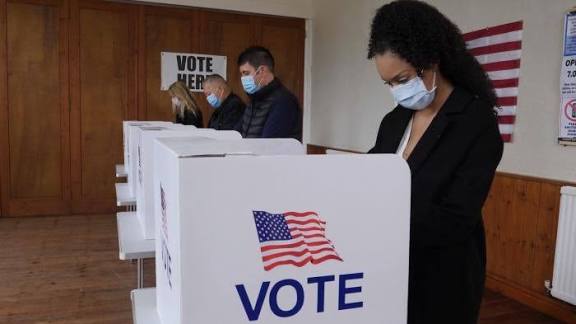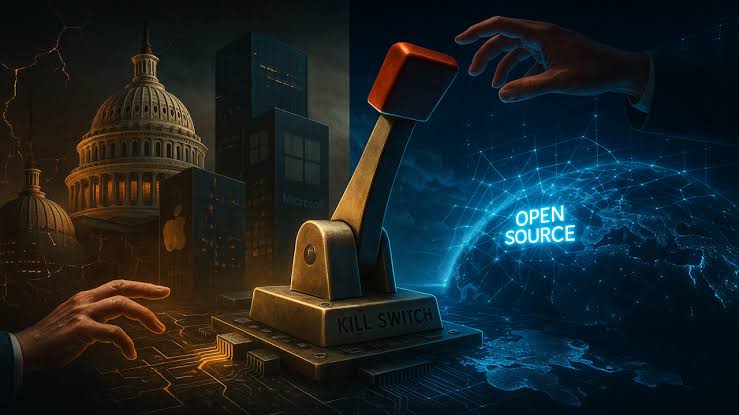What happened to Tom Homan: Catholic Church wrong on immigration,border czar under Obama

The Catholic Church is wrong, I’m sorry,” Homan told reporters outside the White House. ”I’m not just saying this as a border jar. Today we will discuss about What happened to Tom Homan: Catholic Church wrong on immigration,border czar under Obama
What happened to Tom Homan: Catholic Church wrong on immigration,border czar under Obama
Tom Homan has long been one of the most recognizable and polarizing figures in American immigration enforcement. His journey from a frontline Border Patrol officer to the acting director of ICE — and later, the border czar under Donald Trump — has placed him at the center of some of the most heated national debates. In recent years, Homan has also ignited shockwaves within the Catholic community by declaring that the Church is “wrong” on immigration, accusing bishops and even the Pope of misunderstanding the realities of border enforcement.
So what exactly happened to Tom Homan? Why is he in conflict with the Catholic Church? What shaped his worldview during his years under both Obama and Trump? And how did allegations, political battles, and moral clashes define his legacy?
This in-depth article explores these questions and more.
Early Life and Rise Through Immigration Enforcement

Tom Homan’s public persona is built on decades of direct involvement in U.S. immigration enforcement. His early career began in the Border Patrol, where he spent years handling on-the-ground challenges including illegal crossings, smuggling networks, and human trafficking risks.
From there, he moved into supervisory roles and eventually became a key official at U.S. Immigration and Customs Enforcement (ICE). Under the Obama administration, he served as the Executive Associate Director for Enforcement and Removal Operations. His role involved managing deportations, detention operations, and enforcement strategy across the country.
Under Obama, Homan was known for being unusually strict compared to many other administrators. Despite claims that the Obama administration was more lenient, Homan was part of a team that removed large numbers of undocumented immigrants, particularly those with criminal records.
His firm enforcement approach earned him an internal reputation as someone who prioritized security, law, and order above political pressure.
Obama Honors Him — but His Policies Gain Controversy
One of the most surprising chapters of Homan’s career is that he received a prestigious Presidential Rank Award during Barack Obama’s presidency. These awards are given to senior federal executives deemed to have provided exceptional service.
In spite of the award, advocacy groups frequently criticized ICE under Obama, particularly during years when deportation numbers peaked. Many activists blame Homan and his division for contributing to those statistics.
At the same time, Homan was known internally for advocating policies that later became highly controversial — particularly the arguments he made regarding family separation as a deterrent. Although family separations expanded under President Trump, Homan’s belief in strict enforcement and deterrence was already firmly established.
The Trump Era: From Acting ICE Director to Border Czar
Homan’s national prominence skyrocketed once Donald Trump entered office. Trump selected him to serve as Acting Director of ICE and frequently praised him as one of the strongest enforcers in the federal government.
Under Trump, Homan’s philosophy matched the administration’s agenda:
Aggressive deportations
Zero tolerance policies
Family separations at the border
Expanded ICE raids
Support for building a border wall
Increased detention operations
Homan became a regular television commentator, testifying in Congress, defending administration actions, and clashing with lawmakers critical of ICE.
Even after leaving his official post, he remained a key immigration advisor to Trump. When Trump announced Homan would return as “Border Czar” for another term, it solidified his position as the figurehead of hardline immigration strategy.
The Major Turning Point: Homan vs. The Catholic Church
One of the most unexpected developments in Homan’s later career is his public confrontation with the Catholic Church — including bishops and Pope Francis.
1. U.S. Bishops Condemn Mass Deportations
In late 2025, U.S. Catholic bishops issued a strong statement criticizing large-scale immigration raids and denouncing mass deportations as incompatible with Christian charity.
Homan responded directly and harshly.
He declared the bishops “wrong” and insisted that, as a lifelong Catholic himself, he understood the issue better than they did.
2. Homan’s Counterargument: Enforcement Saves Lives
Homan publicly argued that:
Secure borders reduce the number of migrant deaths.
Organized crime and trafficking networks exploit lax policies.
Drug smuggling, especially fentanyl, is strengthened by weak enforcement.
Illegal crossings incentivize dangerous journeys.
According to him, enforcing the law strictly is an act of protection — both for Americans and for vulnerable migrants.
3. Homan Tells Church Leaders to “Fix the Church” First
In one of his most controversial statements, Homan urged bishops to focus on internal Church problems rather than questioning immigration enforcement. This comment, widely reported and debated, heightened the perception of a rift between him and Catholic leadership.
4. Confrontation with Pope Francis
When Pope Francis criticized mass deportations and described certain border practices as harmful to human dignity, Homan pushed back publicly. He accused the Vatican of hypocrisy, pointing out that:
The Vatican itself is protected by walls.
Illegal entry into Vatican City results in prosecution.
The Pope misunderstands the dangers at the U.S. border.
Homan insisted that enforcing immigration law is not incompatible with Catholic faith, and that moral authority on border security should remain with law enforcement experts, not religious institutions.
Homan’s View of Immigration: A Moral Debate, Not Just Policy
Although known for his toughness, Homan frames his arguments in moral and ethical terms. His reasoning includes the following pillars:
1. Deterrence Protects Migrants
Homan frequently emphasizes the horrific dangers migrants face:
Drownings in rivers
Heat exhaustion in deserts
Rape and sexual assault by smugglers
Kidnapping and extortion
Human trafficking
To him, strict enforcement deters migrants from making deadly journeys.
2. Sovereignty Matters
He repeatedly states that every nation has the right to secure its borders and enforce immigration laws. He argues that compassion must be balanced with responsibility and that no nation is obligated to accept unlimited migration.
3. NGOs and Charities Create “Pull Factors”
Homan often criticizes certain humanitarian organizations for making migration easier, claiming — controversially — that some NGOs inadvertently assist trafficking networks by coordinating migrant transport or shelter.
4. Faith and Enforcement Can Coexist
Homan identifies strongly as Catholic, saying his faith doesn’t conflict with enforcement. He believes moral responsibility includes:
Preventing deaths
Preventing smuggling
Reducing crime
Protecting U.S. citizens
This interpretation contrasts sharply with that of many Church leaders, leading to the ongoing ideological clash.
Corruption Allegations and Political Backlash
Another major episode shaping Homan’s public image involved a federal bribery investigation.
The Accusation
Undercover federal agents reportedly met with Homan in 2024 and claimed he accepted $50,000 from individuals who promised financial benefits if Trump returned to office.
Reaction and Aftermath
Although the investigation gained significant media attention, the Justice Department later closed the case, stating there was insufficient evidence.
Homan denied any wrongdoing and said the allegations were politically motivated.
The White House at the time publicly defended him, insisting he had never accepted illegal payments.
Regardless of the conclusion, the episode fueled debate over:
Accountability within immigration enforcement
Political influence over federal investigations
The power dynamics surrounding immigration contracts
Why Homan’s Story Matters Today
Tom Homan represents far more than a single policymaker. His career highlights several ongoing national and ethical debates:
1. The battle between compassion and enforcement
Should immigration policy prioritize humanitarian values, or is strict enforcement itself a form of compassion because it prevents harm?
2. The role of religion in politics
His confrontation with Catholic leaders challenges the idea that religious teachings should influence government decisions.
3. The limits of executive power
Homan’s rise under multiple administrations raises questions about how much influence unelected officials wield in shaping national policy.
4. Public perception and media narratives
To supporters, he is a patriot who defends America’s security.
To critics, he is an enforcer of harmful and dehumanizing policies.
5. The complexity of immigration crises
The debates surrounding Homan underscore the complexity of today’s migration patterns, crime networks, and humanitarian concerns. There are no easy answers — only difficult choices.
What Happened to Tom Homan? A Summary
He rose from a Border Patrol agent to one of the most powerful immigration enforcers in America.
He influenced and shaped key strategies during both Obama and Trump presidencies.
He became the face of hardline border enforcement and zero-tolerance policies.
He entered into a public moral battle with the Catholic Church, challenging its stance on immigration.
He faced investigations and controversies but remained a central figure in policy discussions.
He continues to shape border strategy and public opinion as a prominent immigration advisor.
Conclusion
Tom Homan’s story is a study in contradiction and conviction. He is a law enforcement official celebrated by some as a defender of national security and criticized by others as a symbol of harsh enforcement. His conflict with the Catholic Church brings deeper philosophical questions to the surface: What is justice? What is compassion? And who gets to define morality in the realm of national policy?
Homan’s career raises profound questions about the intersection of faith, law, governance, and humanity — questions that continue to shape America’s immigration debate today.
How useful was this post?
Click on a star to rate it!
Average rating 0 / 5. Vote count: 0
No votes so far! Be the first to rate this post.
About the Author
usa5911.com
Administrator
Hi, I’m Gurdeep Singh, a professional content writer from India with over 3 years of experience in the field. I specialize in covering U.S. politics, delivering timely and engaging content tailored specifically for an American audience. Along with my dedicated team, we track and report on all the latest political trends, news, and in-depth analysis shaping the United States today. Our goal is to provide clear, factual, and compelling content that keeps readers informed and engaged with the ever-changing political landscape.




